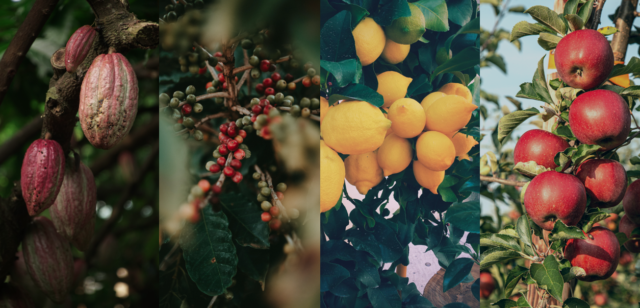
This new approach to removals accounting aims to inspire industry-wide change through a credible method based in science, and enables improved progress-tracking, decision-making and science-based target setting in forest, land and agriculture.
Land-based industries have a critical role to play in preventing us from crossing irreversible climate tipping points. Business needs to embark on profound transformation to reduce emissions but also remove carbon dioxide (CO2) from the atmosphere. Because GHG emissions can’t be feasibly reduced to zero, permanent removals of CO2 from the atmosphere through carbon sequestration in soils and new biomass (e.g., reforestation) will be critical to keep global temperature rise from exceeding 1.5°C. As described by Quantis, “carbon needs to be taken out of the atmosphere for [at least] 100 years for it to be considered a complete negative emission“. To do this, agriculture will need to pivot from being a source of emissions (e.g., deforestation), to serving as a sink: drawing down CO2 from the atmosphere and storing it in land — and keeping it there.
The concept of removing CO2 from the atmosphere is straightforward, and the science and uncertainties of carbon sequestration in soils and perennial systems are becoming well understood. But there’s currently no consensus on how to account for carbon drawdown by trees and soils in corporate and product footprinting. Ensuring permanency is especially challenging for agriculture, since what we grow and where we grow it changes frequently as a result of market shifts, changes in land ownership and, increasingly, climate change. A lack of clear accounting guidelines for carbon sequestration has also led to misleading calculations and claims regarding how soils and trees influence GHG accounting and generated considerable confusion within the sustainability community.
The guidelines tackle this by spelling out that there must be a change in land management or land-use that increases the sequestration of CO2 from the previous state. In other words, there must be evidence that there has been a change in practice that has led to an increase in sequestered carbon beyond business as usual. For every year that CO2 is then known to be removed from the atmosphere, a portion of the long-term climate benefit (i.e. potential to neutralise GHG emissions) can be accounted for. For each additional year that the removed CO2 remains stored in land, an additional portion of the neutralisation potential can be accounted for.
A major criticism of taking credit for the carbon stored in trees and soils is that it can easily be re-released back into the atmosphere, thus reversing the climate benefit and leading to false accounting.
The major strength of the approach outlined in the new methodology is that the climate benefit can be accounted for when it occurs, and remain so as long as the carbon stays stored, which overcomes the uncertainty of the future and incentivises longer-term and much-needed climate action.
While this approach is not new, its application in industry has been largely lacking. With the perennials methodology framework, the Cool Farm Alliance and Quantis bridge this gap by making the approach actionable for business.
Ultimately, companies need to prioritise GHG emissions reductions over removals through sequestration. The global climate science calls for the latter to be reserved for neutralising the residual fossil CO2 emissions that cannot be reduced. So before setting targets and strategies for carbon removals, companies need to be able to demonstrate their strategy for reducing fossil CO2 emissions. Removals are not a ticket to continue to emit, but an opportunity to keep global temperatures within 1.5°C if deep GHG emission reductions occur in tandem. Finally, the motivation to achieve climate targets should not preclude other sustainability areas such as water, biodiversity and socioeconomic issues. A robust climate strategy fits within a holistic approach to sustainability which takes into account impact transfer and co-benefits.
The Cool Farm Alliance is working with the project partners to pilot these methodologies and to collect feedback on how the methodology can be further improved for usability. Finally, the findings and calculations will be implemented in the online Cool Farm Tool and made available to its users as additional metric over the coming year (final timeline for implementation to be confirmed).
Registered address only: 87b Westgate, Grantham, Lincolnshire, NG31 6LE England
support@coolfarmtool.org
Join us at the Cool Farm Annual Event 2025! July 15 – 17 | Belmont Estate, Bristol, UK